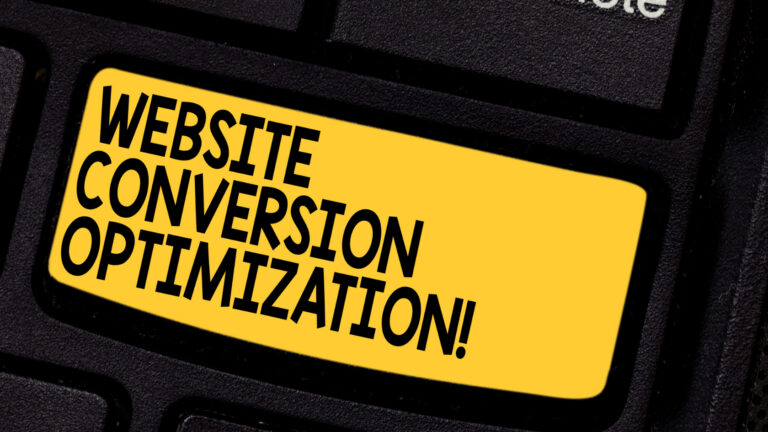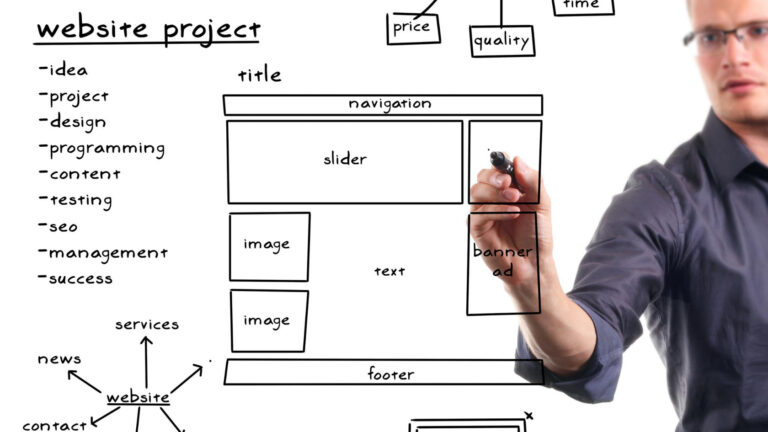
You’ve optimized your landing page, but are you sure you’re driving the conversions you desire?
Discover the key elements that can take your landing page to the next level and boost your conversion rates.
From compelling call-to-actions to optimizing load speed, this article will provide you with data-driven insights and techniques to enhance your user experience and drive higher conversions.
Take control of your landing page optimization and unlock the potential for success.
Key Takeaways
- Focus on design and conversion tracking to increase engagement and conversion rates
- Conversion rate optimization is vital for marketing strategy and leads to increased ROI
- Testing and refinement, including A/B testing and multivariate testing, improve conversion rates
- Data-driven decisions and continuous testing lead to higher conversion rates and impact ROI.
Understanding Landing Page Optimization
To optimize your landing page, you need to understand the principles of landing page optimization. This involves focusing on key aspects such as landing page design and conversion tracking.
Landing page design plays a crucial role in catching the attention of your visitors and guiding them towards the desired action. A visually appealing and user-friendly design can increase engagement and improve conversion rates.
Additionally, conversion tracking allows you to measure the effectiveness of your landing page and make data-driven decisions. By tracking key metrics such as click-through rates and conversion rates, you can identify areas for improvement and optimize your landing page accordingly.
Understanding these principles empowers you to take control of your landing page and maximize its potential for driving conversions.
Importance of Conversion Rate Optimization
To understand the importance of conversion rate optimization, you need to consider three key factors: the conversion rate itself, testing and refinement, and the impact on ROI.
The conversion rate is a crucial metric that measures the effectiveness of your landing page in turning visitors into customers.
By continuously testing and refining your landing page, you can identify areas for improvement and optimize for higher conversions.
Ultimately, a higher conversion rate leads to increased ROI, making conversion rate optimization a vital aspect of any marketing strategy.
Key Conversion Rate Factors
Optimizing your landing page’s conversion rate is crucial for maximizing its effectiveness. To achieve this, you need to understand the key conversion rate factors that drive success.
One important factor is conversion rate analysis, which involves analyzing the performance of your landing pages to identify areas for improvement. By examining metrics such as click-through rates, bounce rates, and conversion rates, you can gain valuable insights into what’s and isn’t working.
Additionally, it’s important to compare your conversion rate benchmarks to industry standards to see how your landing page is performing relative to others. This helps you set realistic goals and identify areas where you can outperform your competitors.
Testing and Refinement
You can improve your landing page’s conversion rate by continuously testing and refining its elements. Implementing effective testing strategies and conducting conversion analysis are crucial for optimizing your landing page’s performance.
By testing different variations of your headlines, images, call-to-action buttons, and form fields, you can identify which elements resonate best with your audience and drive higher conversions. A/B testing and multivariate testing are two common testing strategies that allow you to compare different variations and determine which ones have the greatest impact on conversion rates.
Conversion analysis involves analyzing data and metrics to gain insights into user behavior and identify areas for improvement. By continuously testing and refining your landing page, you can make data-driven decisions that will ultimately lead to higher conversion rates.
Impact on ROI
By maximizing your landing page’s conversion rate, you can significantly impact your return on investment (ROI). Conversion rate optimization (CRO) is a crucial aspect of driving revenue through your landing page. A higher conversion rate means more leads, more sales, and ultimately more revenue for your business.
To assess the impact on revenue, conducting conversion rate analysis is essential. By analyzing the data and identifying areas for improvement, you can make informed decisions to optimize your landing page and increase conversions. This data-driven approach allows you to make strategic changes, such as improving your call-to-action, simplifying the form, or enhancing the overall user experience.
Key Elements for Effective Landing Pages
When it comes to effective landing pages, two key elements play a crucial role in driving conversions: design impact and call-to-action effectiveness.
The design of your landing page can greatly influence whether visitors stay and take action or leave. A visually appealing and user-friendly design can create a positive user experience, increasing the chances of conversion.
Additionally, the effectiveness of your call-to-action (CTA) is vital in guiding visitors towards the desired action, whether it’s making a purchase, signing up for a newsletter, or downloading content.
Design Impact on Conversions
Optimizing the design of your landing pages significantly impacts conversions by incorporating key elements for effective conversion rates.
Design psychology and user behavior play a crucial role in shaping the success of a landing page. When users visit your landing page, they form an immediate impression based on its design. A cluttered or confusing layout can deter them from taking any action, resulting in low conversions.
On the other hand, a clean and visually appealing design can capture their attention and encourage them to explore further. Using colors strategically, creating clear and concise messaging, and employing intuitive navigation are key elements that can boost conversions.
Call-To-Action Effectiveness
To effectively drive conversions on your landing page, it’s important to focus on the call-to-action’s effectiveness and incorporate key elements for creating an impactful and persuasive message.
One critical aspect to consider is the placement of your call to action. Research has shown that placing the call to action above the fold, where it’s immediately visible to visitors, can significantly increase conversion rates.
Additionally, the design of your call to action plays a crucial role in its effectiveness. It should stand out from the rest of the page, using contrasting colors, bold fonts, and clear wording.
Crafting Compelling Call-to-Actions
You can increase landing page conversions by crafting compelling call-to-actions. Crafting persuasive copywriting and creating visual appeal are crucial elements to consider when designing effective call-to-actions.
Persuasive copywriting involves using language that resonates with your audience, highlighting the benefits and value of your offer. By clearly communicating what action you want your visitors to take, you can guide them towards conversion.
Additionally, creating visual appeal through the use of colors, fonts, and imagery can capture attention and engage users. A well-designed call-to-action should be visually prominent, easily distinguishable from other elements on the page, and provide a clear and concise instruction.
Optimizing Landing Page Forms
Crafting compelling call-to-actions is just the first step in driving landing page conversions through optimization; now, let’s delve into the importance of optimizing your landing page forms.
Optimizing your forms is crucial for improving user experience and increasing form completion rates. By streamlining the form fields and reducing the number of required fields, you can make the form feel less overwhelming and time-consuming for users.
Additionally, providing clear and concise instructions, along with real-time error validation, can help users navigate the form more easily and reduce form abandonment. Implementing autofill options and using smart defaults can further expedite the form completion process.
Enhancing User Experience for Higher Conversions
By optimizing your landing page forms, you can enhance the user experience and drive higher conversions. User engagement is a critical factor in improving conversion rates.
To enhance user experience, analyze your conversion funnel and identify areas where users may drop off or experience friction. Simplify your forms by reducing the number of fields and asking for only essential information. Use clear and concise instructions to guide users through the process and minimize confusion.
Additionally, optimize your landing page for mobile devices to ensure a seamless experience across different platforms. Conversion funnel analysis can help you identify any bottlenecks and optimize your landing page accordingly.
Optimizing Landing Page Load Speed
To optimize landing page load speed, focus on minimizing unnecessary elements that may slow down the page. A slow-loading landing page can significantly impact the conversion rate and frustrate visitors, leading them to abandon the page before taking any action.
Research shows that users expect a web page to load within two seconds, and any delay beyond that can result in a higher bounce rate.
To enhance the load speed, consider compressing images, reducing the number of HTTP requests, and minifying CSS and JavaScript files. Additionally, use a content delivery network (CDN) to distribute the page’s resources across multiple servers, ensuring faster loading times for users across different geographical locations.
Leveraging Social Proof and Testimonials
When leveraging social proof and testimonials, you can further enhance your landing page’s conversion potential by showcasing real customer experiences and feedback.
Social proof refers to the influence that the actions and attitudes of others have on our own behavior. By displaying customer testimonials on your landing page, you provide potential customers with proof that your product or service is valuable and trustworthy.
According to a study by Nielsen, 92% of consumers trust recommendations from friends and family, while 70% trust online consumer opinions. Testimonials add credibility to your landing page and help to alleviate any doubts or concerns that potential customers may have.
Implementing A/B Testing for Continual Optimization
One effective way to continually optimize your landing page and drive conversions is through the implementation of A/B testing. A/B testing, also known as split testing, involves comparing two versions of a webpage or element to determine which one performs better. This data-driven approach allows you to identify the most effective design, copy, or layout that resonates with your audience and leads to higher conversions.
A/B testing offers several benefits for landing page optimization. It helps you make data-backed decisions, eliminates guesswork, and maximizes the impact of your changes. By testing different elements, you can optimize your landing page for higher click-through rates, lower bounce rates, and ultimately, more conversions.
However, A/B testing also comes with its own set of challenges. It requires careful planning, accurate tracking, and sufficient traffic to obtain statistically significant results. It can be time-consuming and may require technical expertise to set up and analyze the tests correctly. Additionally, it’s important to avoid common pitfalls such as testing too many variables simultaneously or drawing conclusions based on insufficient data.
To overcome these challenges, it’s crucial to have a clear testing plan, prioritize your hypotheses, and ensure that you have enough traffic to generate reliable results. Regularly analyzing the data and iterating on your tests will lead to continual optimization and improved landing page conversions.
How Can Optimizing a Landing Page Design Drive Conversions?
Optimizing landing page design effectiveness is crucial for driving conversions. By focusing on a clear call-to-action, compelling visuals, and streamlined navigation, you can engage visitors and encourage them to take the desired action. A well-optimized landing page design can significantly impact conversion rates and ultimately drive business success.
Conclusion
In conclusion, optimizing landing pages is crucial for driving conversions. By focusing on key elements such as compelling call-to-actions, user-friendly forms, and fast load speeds, you can enhance the user experience and increase conversion rates.
Additionally, leveraging social proof and testimonials can instill trust in your audience, while implementing A/B testing ensures continual optimization.
Just like a well-tuned engine, a finely optimized landing page will propel your business forward, attracting and converting more customers.
- How to Plan a Content Calendar That Works - 29/10/2025
- SEO Content vs. Social Media Content: What’s the Difference? - 23/10/2025
- The Best Types of Content for Service Businesses - 16/10/2025


